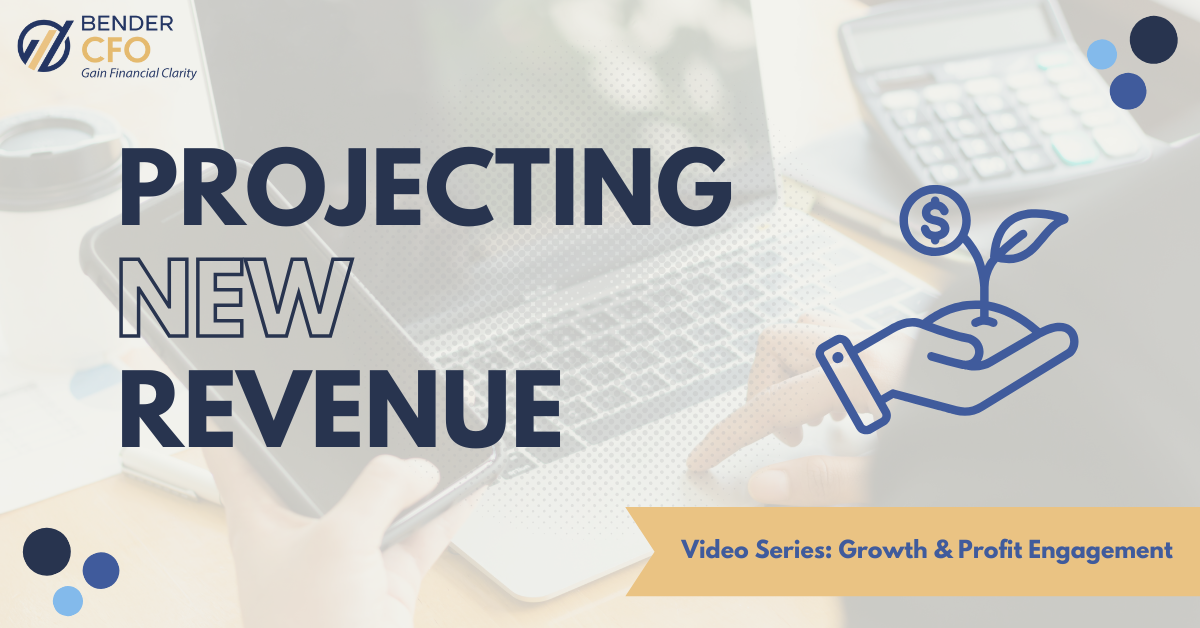Top Reports that Marketing Agencies Should Review Regularly
I have spent nearly 15 years working with Marketing Agencies in various financial roles. I have...
By: Shane Bender on Oct 16, 2025 11:02:43 AM

Your bank account can look healthy while your business is quietly drifting off course. Cash today doesn't guarantee growth tomorrow. That's why projecting new revenue isn't just a finance exercise; it's how you steer the ship with confidence instead of guessing which way the wind is blowing.
In the second video of my Growth & Profit Engagement series, I share with you an easy framework new businesses can use to project new revenue. I show how to turn sales pipeline data into a tool that helps you plan hires, spot upsell opportunities, and hit your goals without crossing your fingers. For a full walkthrough, watch the video and check out the rest of the Growth & Profit Engagement series.
New Revenue Projection is the process of forecasting the income your business will generate from new clients and expanded services with existing clients over a specific period. Unlike tracking recurring revenue, this involves estimating future income from your sales pipeline.
Your financial health depends on understanding your revenue and having a realistic plan for the future. Here are three essential steps for projecting new revenue, helping you transition from hope to a data-driven strategy for growth.
You can't hit a target you haven't defined. The process begins by looking at your current financial health and your goals for the future.
Your existing revenue run rate is the predictable monthly revenue from your current contracts. This is your foundation – the money you can reliably count on each month. Think of it as the "ground floor" of your revenue tower.
Client turnover is a natural part of business, and it's essential to account for it in your forecast. To get a realistic baseline, use your historical data to estimate what percentage of your clients you might lose over the year. Subtract this from your run rate to get a more accurate picture of where you stand.
Finally, set your ultimate revenue goal for the year. The difference between your realistic baseline and your goal is your new business target. This is the specific dollar amount you need to generate from new clients and upsells to hit your goals.
Your pipeline is the list of all your potential new clients and upsell opportunities. A strong pipeline is your roadmap to achieving your new business target.
Whether you use a CRM like HubSpot or Salesforce, or even a simple spreadsheet, you should track four key data points for every opportunity:
Inflated probabilities create false hope; conservative ones give you clarity.
Pro tip: Leave a small line for "unidentified" revenue if surprise deals often pop up, but don't lean on it. A better approach is to use historical data on past deals to guide your expectations for both new business and client attrition.
Once your pipeline is mapped out, you can see if you're on track to hit your new business target. Let's say you need to close a $3 million gap. If the total projected value of your pipeline (sum of Potential Revenue x Probability) is only $1 million, you have a problem. Your pipeline is not robust enough to support your goals, and you need to ramp up your sales and marketing efforts.
The numbers in your forecast should directly inform your business decisions. For instance, can you afford to hire a new employee? Your projected revenue should support that decision. The forecast also helps you monitor your key performance indicators (KPIs), such as your gross margin and revenue per head (a healthy gross margin for most service businesses falls between 50% and 60%).
Ready to Strengthen Your Business?
Bender CFO Services' Growth & Profit Engagement gives you clarity on revenue, expenses, staffing, and cash flow — all backed by advanced valuation tools. It's a structured, short-term engagement designed to uncover growth opportunities, improve profitability, and help you plan for the future with confidence. Learn more about the Growth & Profit Engagement.
I have spent nearly 15 years working with Marketing Agencies in various financial roles. I have...
Growing a business isn’t just about hard work and hustle—it’s about making smart decisions. And no...
We recently discussed general and industry-specific inflation. As the economy picks up, it will be...